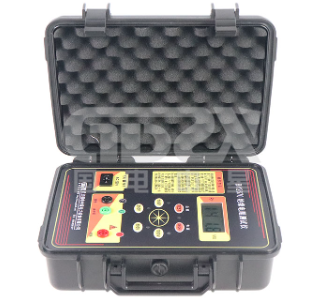NEWSnews
The Influencing Factors and Precautions Of Sleeve Insulation Resistance Testing
Generally, the test should be conducted under conditions where the relative humidity of the air is not higher than 80%. In humid weather where the relative humidity is greater than 80%, an extremely thin layer of water film will condense on the surface of the porcelain sleeve of the electrical equipment lead out, causing surface leakage channels and significantly reducing the insulation resistance. At this point, a shielding ring should be installed on the porcelain sleeve of the lead wire (tightly tied with thin copper wire or fine fuse for 1-2 turns) and connected to the shielding terminal of the megohmmeter. The shielding ring should be connected to the ceramic sleeve terminal near the high voltage end of the megohmmeter, away from the grounding part, to avoid overloading the megohmmeter, causing a sharp decrease in terminal voltage, and affecting the measurement results.
The influence of induced voltage
Measure the insulation resistance of high-voltage overhead lines. If the line is parallel to another live line, it cannot be measured to prevent static induced voltage from endangering personal safety, and to prevent obvious power frequency induced current from flowing through the megohmmeter, making the measurement impossible.

The influence of temperature
The temperature of the test sample should generally be between 10~40 ℃.
The insulation resistance decreases with increasing temperature, but there is currently no universal fixed conversion formula. The temperature conversion coefficient is best determined by actual measurement. For example, under normal conditions, when the equipment stops running and cools down on its own, the insulation resistance value can be measured at different temperatures to calculate its temperature conversion coefficient.
Judgment of measurement results
The measurement of insulation resistance value is the most basic item in routine testing projects. Based on the measured insulation resistance value, the insulation condition of the equipment can be preliminarily estimated, and it is usually determined whether other insulation test items with applied voltage can be continued.
The insulation resistance value of the main insulation of the sleeve should not be less than 10000M Ω, and the insulation resistance of the end screen to ground should not be less than 1000M Ω. For capacitive sleeves, the same requirements are required for those with voltage extraction terminals as the end screen. In addition to the measured insulation resistance value being very low and the tester believing that the insulation of the equipment is poor, in general, the tester should compare the insulation resistance values of different phases under the same conditions or compare the results of previous tests on the same equipment (converted to the same temperature under possible conditions), and make a comprehensive judgment in combination with other test results. When necessary, decompose and measure each part of the test object separately, and connect the non measured parts to the shielding end for easy analysis of the defective parts.
GDZX is a manufacturer of power testing equipment, producing a wide range of products with complete models and providing professional technical support. The phone number is 4000-828-027.





















